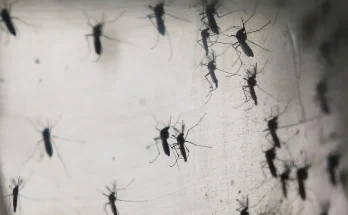Rainforests are among the world’s most biodiverse ecosystems, home to an estimated 80% of the world’s insect species. The humidity and dense vegetation of these lush environments provide ideal conditions for the myriad of intriguing arthropods that have adapted to thrive in such environments. Although the majority of these exotic animals stay close to home, world trade and travel sometimes bring these rainforest refugees home with us.
Around 40-50 non-native species of insects are introduced accidentally to new areas each year with the importing of plants, wood, and other imports. While these abnormal guests may make you curious, knowing about them can assist homeowners in recognizing which issues they are facing if a tropical insect comes knocking at their door and when to call an Exterminator in Denton.
7 Bugs That Exist In Rainforests And Why They Show Up In Your Home Sometimes
-
Rhinoceros Beetles
These amazing beetles fall into the category of the strongest animals on the planet, able to lift objects 850 times their body weight. Rhinoceros beetles have distinctive horns and thick exoskeletons and are native to the rainforests of Southeast Asia and South America.
These beetles sometimes come into homes on imported exotic plants or wooden furniture. Though harmless to humans, their size can certainly alarm if they turn up indoors. They are drawn to lights and can find their way indoors around houses next to wooded areas when windows aren’t closed at night.
-
Assassin Bugs
With more than 7,000 species around the world, these predatory insects are found in most tropical rainforests and are employed in pest control by feasting off garden-destroying bugs. They are named for their style of hunting — ambushing prey with a strong proboscis.
They are beneficial in gardens since they prey on pest insects, but some species bite when handled, and the bite can hurt. They can sometimes be found in houses with indoor plants or near gardens with tropical vegetation.
-
Leafcutter Ants
These busy little ants are well-known for harvesting circular bits of leaf tissue to bring back to their colonies to grow fungus to eat. Leafcutter ant colonies may reach numbers of 8 million individuals.
Complete colonies are unlikely to settle outside rainforests, but individual leafcutter ants can find their way here in potted plants or soil imported from tropical countries. Plant owners with many indoor plants may now and again catch a glimpse of these unique ants trimming small plant segments around their plants.
-
Giant Water Bugs
These aquatic predators can grow as large as 4 inches, making them among the largest true bugs in the world. They live in freshwater ecosystems within rainforests, where they prey on small fishes, amphibians, and other invertebrates.
Giant water bugs are drawn to lights and can fly long distances from their natural habitats. They sometimes invade homes through open windows or doors, especially in their mating seasons. These bugs are also attracted to swimming pools and outdoor water features.
-
Orchid Mantises
These incredible predator insects have developed into perfect impostors of the orchid blossom. In the rainforests of Southeast Asia, their camouflage enables them to ambush pollinating insects.
Plant lovers who buy exotic orchids may find these chameleons in their collections.
-
Hercules Beetles
Closely related to rhinoceros beetles, Hercules beetles can reach around 7 inches in length, which puts them among the largest species of beetle. The males use large horns while competing for mates.
These beetles can enter through imported hardwoods or wooden crafts from Central and South American rainforests. Their size means that though extremely uncommon in homes, they are impossible to overlook when they do show up.
-
Lantern Flies
Famous for bright patterns and unusual outcroppings on their heads that claim to mimic Chinese lanterns, these insects come from tropical rainforests in Asia and South America.
Certain lantern fly species are available as houseplants that have burgundy or black spots. They can hitch a ride on imported plants or fruits and can also settle into gardens before eventually heading indoors, especially in warmer climates with soil and humidity similar to their native environments.


